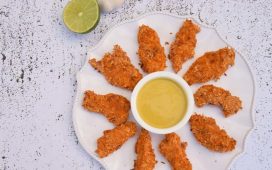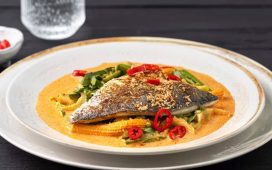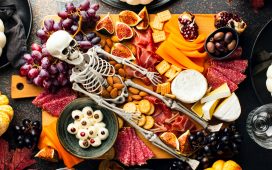KANSAS CITY — In the bread aisle, hindsight is 20-20 in more ways than one. Every baker learned a bevy of invaluable lessons after the coronavirus (COVID-19) pandemic descended last March. When businesses shuttered, schools closed and Americans rushed to stock up on necessities, staples like rice, pasta and beans were in short supply. And the bread aisles were emptied.
As things settled into a new normal, demand for bread remained high through 2020 and into 2021. Sandwich bread sales rose 9% in 2020 after falling 1% in 2019, according to NielsenIQ data, and overall bread sales, which include artisan bread, English muffins and flatbreads, rose 10.6%.
“Just an amazing turnaround,” said Todd Hale, retail insights thought leader and principal of Todd Hale LLC. “Sandwich bread added $642 million in sales between 2019 and 2020. The year before it was down $68 million. Buns did incredibly well, too. They were up 2% in 2019. They grew 19% in 2020.”
Sales data reveal not only trends that emerged in the past year, but the numbers also provide insight into opportunities bakers can pursue moving forward.
Indulging in the good stuff
Retail sales had a great year in 2020. Fresh bread, hot dog and hamburger buns, rolls, bagels and English muffins all had double-digit growth, according to market research firm IRI.
“I think variety is important,” said Dawn Aho, client insights principal, IRI. “As people have stayed home for an extended period of time, they may be purchasing a different brand or type either because of availability or to provide a different in-home experience.”
Bakers saw a spike not only in better-for-you breads but also in the more indulgent varieties, too.
“I think people wanted food that reminded them of good things,” said Jeff Sobotta, vice president of sales at Schmidt Baking Co., which is a division of the H&S Family of Bakeries, Baltimore. “The pandemic really helped the indulgence side. People realized they still like to eat; they still like things that taste good. If they didn’t, brioche wouldn’t be growing the way it is; King’s Hawaiian wouldn’t be growing the way they are. For us, we have many items on the indulgent side, but it’s another avenue for us to focus on more.”
The sweet soft King’s Hawaiian bread and rolls were a consumer favorite. Sales of the brand’s fresh rolls and buns rose 12.9% in 2020, according to IRI.

Bagels, English muffins and other breakfast breads also posted strong gains.
“The breakfast category blew up bigger than anything during the pandemic because people were not stopping at McDonald’s because they were not going to work,” Mr. Sobotta said. “Our bagel bakery was pretty much maxed out every week because of the breakfast growth.”
Banking on BFY bread
Consumers were snapping up healthier breads, too, especially those that are low carb and high in protein and fiber.
“The healthy segment had been growing but it really jumped last year, and we’re seeing this year it’s still one of our biggest growing segments,” Mr. Sobotta said, adding that the company’s 647 Bread (6 grams net carbs, 40 calories, 7 grams fiber per slice) has been a good seller.
Younger generations are driving interest in healthy products, said JR Paterakis, co-principal and senior vice president of sales and marketing at H&S Bakery.
“Consumers are changing, especially millennials and Generation Z, and they require more improved nutritional attributes to the characteristics of better-for-you products, which is product with protein, fiber, whole grain,” he said.
The carb smart breads have also been a winner for Aunt Millie’s Bakeries, Fort Wayne, Ind., as well as the bakery’s artisan breads. Taste, as always, is king.
“People are buying more bread that they want to eat at home, and they want it to be good,” said Bohn Popp, executive vice president of quality and brand strategy at Aunt Millie’s. “They don’t want it just to be a filler.”
Consumers expect excellence and consistency, said Tony Martin, executive vice president of Martin’s Famous Pastry Shoppe Inc., Chambersburg, Pa., which saw a 34% gain in 2020 sales, according to IRI.
“We need to keep our quality at a high level,” he said. “During pandemics and beyond, sharing meals with your family with food that tastes great and is made from wholesome, high-quality ingredients is always a good plan.”
Whole wheat and whole grain, however, was the one lackluster category singled out by bakers. Some consumers don’t perceive them as healthy as the low-carb or high fiber versions, and it isn’t as tasty as some of the more indulgent varieties.
“It seems to have plateaued right now, and I think flavor is part of that,” Mr. Popp said. “A baking company that can come up with a good tasting whole grain is going to do well.”
Sandwiched opportunities
While sandwich bread sales outpaced previous years by a longshot, some of the items that are eaten on sandwich bread did even better. For instance, pre-sliced deli cheese jumped more than 25%, deli lunchmeat rose 13.2% and jellies and jams were up nearly 14%, according to NielsenIQ.
“The sandwich bread category did not grow as fast as some of the products that are consumed with it, which I think is an opportunity,” Mr. Hale said.
Bakeries and the baking industry, he suggested, could learn from campaigns like “Beef. It’s what’s for dinner,” which shares recipe ideas with consumers. That campaign offered recipes in 2020 that helped consumers make the most of their beef by helping them plan meals throughout the day, reducing waste.
“I’ll go out and buy the ingredients the same day to make that fabulous meal you get from the Food Network,” Mr. Hale said. “But you rarely see bread as a component of that meal. Or a dinner roll. I think there’s an opportunity for merchandise advertising to take advantage.”
Some in the industry are already using this strategy and expanding on it.
“We created a whole campaign of King’s Hawaiian stay-at-home recipes that included sliced bread, as well as other King’s Hawaiian items,” Mr. Donvito said. “After witnessing consumer willingness to engage with King’s Hawaiian products for many different types of meals at home, we plan to continue to provide inspiring recipe ideas to help them do just that.”

“Think about families serving three meals a day with all the economic constraints of the past year,” Ms. Aho said. “They are looking for simpler meals. Hamburger, hot dog buns have done very well as have breakfast breads.”
Mr. Sobotta said his company saw hot dog rolls grow more than hamburger buns, which he attributed to parents seeking out the simplest meal solutions possible.
Beyond the pandemic
As bakers and industry experts reflect on the upheaval of the wholesale industry since the pandemic began, they see opportunities for future growth.
“We learned a lot, and we learned it fast,” Mr. Popp said. “We had to make dramatic changes a year ago. We were making fewer items and making long baking runs, and our bakeries were running very well. Really the epitome of a good model. I think we’re going to learn more from that. There probably will be SKU reduction in our industry and our business.”
Mr. Sobotta predicted some consumer behaviors will stick with the new normal.
“People are going to cook at home more because they realize it wasn’t so hard; maybe they liked it,” he said. “There’s going to be more people working from home permanently, so they’re going to have to have more food in the house.”
He also suggested that consumers will continue to find comfort in high end products.
“You’re going to see more and more brioche offerings,” Mr. Sobotta said. “That indulgent category, that artisan, more premium-looking category. Those products were all more in-store bakery, and they’re starting to creep into the bread aisle, and I think you’re going to see that more.”
And with the younger generations driving demand for healthy breads, bakers can bank on seeing that category continue to expand.
“Health is still very, very important,” Mr. Popp said. “Protein, fiber, I think you’re going to see more with immunity building.”
High-quality breads, and better planning and innovation by bakers will be vital parts of the wholesale baking industry moving forward. Also, the continued acceleration of online grocery shopping and its impact on sales.
“One of the key trends that we saw as an industry in 2020 was the accelerated acceptance of online grocery shopping for consumers,” Mr. Donvito said, adding that King’s Hawaiian saw significant growth here. “We believe this trend is here to stay and will impact all areas of online grocery buying.”
Consumers are expected to continue experimenting with new breads and brands, and the industry can expect some of the experimentation will lead to loyal customers. This creates a real opportunity for bakers to build on the bonanza in retail bread sales that was 2020.
“I think these categories have opportunities to maximize and extend their resurgence, in their importance to the family meal and their ability to keep new buyers enticed over the last year in their franchises,” Ms. Aho said.





